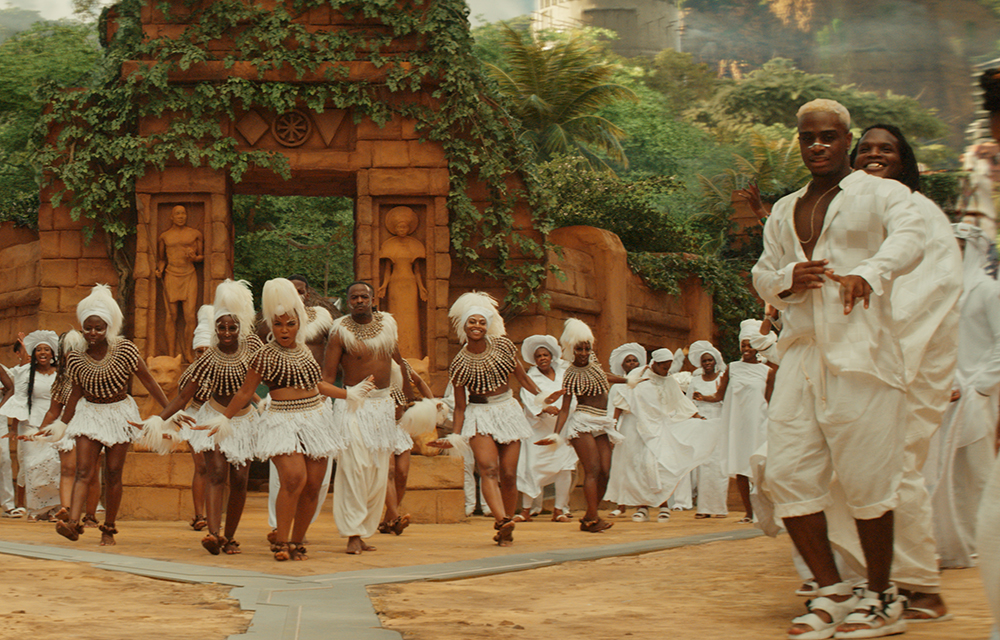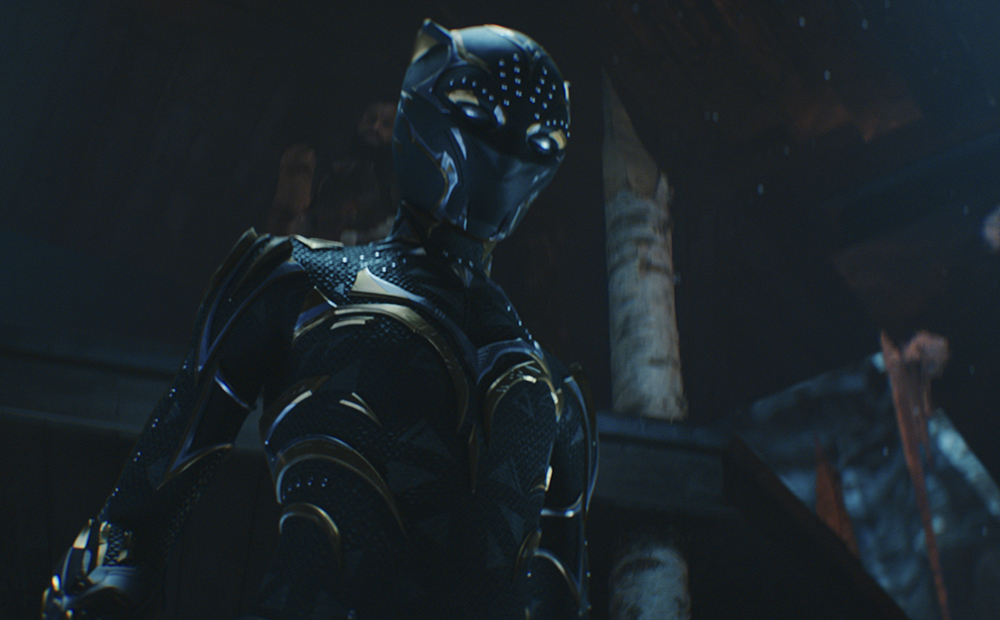The best part of “Black Panther: Wakanda Forever“ is the loving tribute to Chadwick Boseman, which brings a sense of plunging sadness (and a new resurgence) to its dramatic affairs. Nevertheless, the rest of the picture is yet another bland, boring, and horrid superhero fist-fight. It plays with ideas and characters that initially intrigue, but drowns them in tiresome excessive Marvel lore and universe expansion, just like what happened with Chloé Zhao’s “Eternals.”
At least from my perspective, the Marvel fatigue is real. I stopped caring for the projects ever since they closed down their first expansive shop, the Infinity Saga, with “Avengers: Endgame.” After that film, everything felt unnecessary because that was the perfect conclusion to the heroes we have grown up with. But, of course, because everything in the world runs with monetary green fuel, Feige and crew weren’t going to stop there. More and more was to come at a rapid pace.
A Movie that Suffers from Excessive Marvel Lore
As a result, each year, we get multiple movies and tv-shows. It should be fine if they are any good, but that’s the issue; they are achingly terrible, bland, and, worst of all, boring. I have lost complete patience with everything involving Marvel. Still, one of their projects released this year managed to entertain me, even if I enjoyed it for the wrong reasons: Sam Raimi’s “Doctor Strange in the Multiverse of Madness.” Yes, it is drenched in everything that the famed comic book franchise is applauded for, with several cameos and lore scattered across a weird canvas. Raimi managed to add some captivating techniques to what could have been a trepid film in the hands of another. Its action set-pieces felt like pantomime wrestling acts, and the dramatic scenes of explanation (and “emotion) were telenovela-like. It may sound terrible or ridiculous, but I had a lot of fun with it, more so than I anticipated.
Nonetheless, a new Marvel project finds its way to shore, a sequel to the acclaimed “Black Panther” sub-franchise. Many consider Marvel’s best effort to date, and I wholeheartedly agree. Unfortunately, it arrives with a saddened backbone. The actor behind the titular hero, Chadwick Boseman, passed before the film started production. It is heartbreaking, indeed. He was such an outstanding actor that put his heart and soul into every role he acted in. This is specifically true in his last ones, Spike Lee’s “Da 5 Bloods” and “Ma Rainey’s Black Bottom.” Ryan Coogler had a lot on his hands for the sequel. Thinking about where to start and how to tackle such a loss is a harsh task.
The Film Handles Boseman’s Tribute Well

Coogler and Feige spent a lot of time trying to figure out how they would make a new” Black Panther” film with such a tragedy. And they managed to create the movie in honor of the late actor. “Wakanda Forever” is a three-part concoction: a tribute to Boseman, a sequel to the first picture, and a superhero blockbuster that wants to expand the universe for bigger and “better” things. Unfortunately, that may be the problem with the film; it is one thing too many (causing cohesion to be long and forgotten) and commits the worst sin of all for a multi-million-dollar action-packed picture, being utterly vapid. It sucks of all the life, colors, and vibrancy that the 2018-hit had. “Wakanda Forever” begins with a funeral; King T’Challa is dead, and the people of Wakanda are mourning. These initial moments of grief, and an occasional dash of dread, start the film on a high note. So engaged with the turn it takes, I’m submerged in the emotional pulls. This is not because of the mantle, but the actor who played him.
It is a tribute to Boseman and what his portrayal of the titular hero did for kids around the world. The film moves and sways with its emotion, but eventually takes its audience out of the picture when the clunky CGI begins to take over. And there’s no turning back now; the worst is yet to come visually. Quickly after the funeral, adding to the film’s point of not letting its characters have moments to grieve (right until its closing scene, when it is too late to do so), Coogler wants to explore the ideologies of invasion. The aftershocks of Wakanda are revealing itself to the world and how they react to their technology, specifically their vibranium. However, that isn’t the only way Coogler wants to expand upon that theme. There’s a new powerful underwater kingdom on the rise, Talokan, led by Namor (Tenoch Huerta). Now, Queen Ramonda (Angela Bassett), Shuri (Letitia Wright), M’Baku (Winston Duke), and the Wakandan people must fight to protect their nation as they face tougher opponents than they have ever seen.
Reaching the Point of Marvel Frustration
Whenever a new Marvel movie comes out, the word “different” is thrown out easily. And it is strange since every project begins as being distinctive but ends up as more of the same. You get a proper introduction that hints at possible ideas or concepts, which intrigues viewers into thinking they are about to see something of worth. Yet, the film erases that possibility. It later drowns the rest of the movie in Marvel lore, world-building, and character introduction. This is exactly what happened with Chloé Zhao’s “Eternals.” And now it happens with “Wakanda Forever.” There are moments where one thinks it would dwell in concepts of grief, colonialism, greed, and the worshiping of gods. And although it tackles them in some way, shape, or form, it is slight, short-sighted, and unassuming. The film remains underdeveloped in its overarching themes because it hangs its Marvel flag high. World-building (expansion) and lore (character introductions) come first rather than concocting a proper narrative with anything interesting to say.
It gets to the point where the film becomes frustrating because of its lack of conviction in exploring themes in-depth. Of course, it is a popcorn movie at its core, so that you won’t expect a thesis worthy of analysis or thematic resolution. However, it feels as if it’s back-peddling constantly when trying to balance moments of value with ones of future expansion. And worst of all, its action sequences and set pieces are dull, uninspired, and visually lackluster. The previous film was filled with vibrancy and had a colorful heart. But here, it is all drenched in tepidness that surrounds the Hollywood gloss and extremely poor CGI, to the point where it looks way worse than videogame graphics (“Final Fantasy XV’s” cutscenes look more realistic than this). Because of such a lack of visual vivacity, the film is not as immersive with its world like before. If its action doesn’t entertain you, the story is botched completely, and its ideas aren’t fully realized. What’s left of “Wakanda Forever?” Not much.
Another Tired Addition to the Marvel Catalog
Outside of a few performances (primarily Angela Bassett and Tenoch Huerta) and the first fifteen minutes (where it does a well-shot and visually beautiful tribute), the rest is just another horrid addition to the Marvel catalog, unfortunately. This was to be the saving grace of the Marvel Cinematic Universe. However, it leaves way too much to be desired. “Black Panther: Wakanda Forever” is an utter disappointment that lacks in most facets that make up for proper popcorn entertainment with emotional engagement.
“Black Panther: Wakanda Forever” is only available to watch in theaters.
Support the Site: Consider becoming a sponsor to unlock exclusive, member-only content and help support The Movie Buff!

